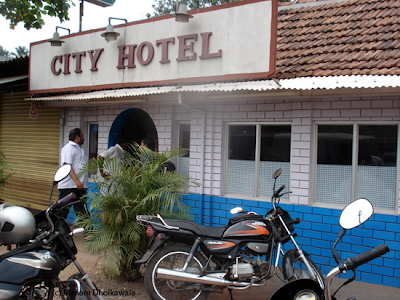“The place you know best is the one you live in”
Getting on the rocky road to Himachal Pradesh
Curious to experience snowfall and figure why people living in the mountains are happy people drove me to the hill stations of Himachal Pradesh. Himachal Pradesh, a quiet and hilly state of India is situated in the outer Himalayas (Shivlik Hills). The locals also known as the “Pahadis” ensure you get a good experience wherever you go!
My first stop was the charming Kasauli. Located at a distance of 65km from Chandigarh, my option was to either travel by a comfortable rented car or travel by the local bus. The car would drop me directly to Kasauli in 2 hours but the local bus would have its struggles which would include a 3+ hour ride from Chandigarh to Dharampur, a bus change, and then another 45 mins to Kasauli. The latter is fun but good for a one time experience if you are weak-hearted (crowded, many stops, late)!
 |
| Kasauli Market |
Kasauli was developed by the British during their rule in India. Its narrow paths, beautiful valley views, scattered population and amazing weather might have appealed the British then. Good thing it has been retained today just as well. Kasauli is surrounded by pine trees and the air there is so pure, that it is recommended by doctors for those with respiratory problems. During winters the temperature can fall below 5deg C and the air can get extremely foggy.
Moving around Kasauli
On entering Kasauli I was greeted by a towering church called the Christ Church. It is probably the only dominating structure in all of Kasauli. Inaugurated and built during the 19th century it is a quaint little gothic construction with pretty stained glass work inside.
 |
| Christ Church |
The other popular place of visit is the Manki Point (often referred to as Monkey Point). Manki in hindi stands for “From your Heart”. They say that when you visit the Hanuman Temple at Manki Point, you should make a wish and it will come true if wished from the heart. Located inside an Air Force area, all cameras and phones are banned. Moreover it is important to carry an ID proof if you want to get inside the area at all. Be ready to get intimidated by a strict officer who issues you a pass at the entrance. They only want to ensure that you are not breaking any rules while you are inside their zone, because the rest of the folks there are pretty much cool to talk to. And yes, you will be spied at secretly all the time!
Kasauli also has the famous Lawrence School in Sanawar – one of the best boarding schools in India. The school building nestled inside a thick forest of trees almost looks like a palace in a lost city.
 |
| Lawrence School in Sanawar |
Where to stay in Kasauli
The hotels in Kasauli are very scattered, most of them are away at a distance of 3-6km. That is probably the reason why the main Mall area of Kasauli remains quiet and sparsely crowded at most times.
The HPTDC government hotel – Ros Common is a safe option for single or female travelers. Run by the Himachal Tourism, Ros Common is a colonial bungalow with only 6 rooms. Their upkeep still reflects of the older times but the overall experience of living there is very different. Almost like living in your own home in Kasauli. To stay in a more upscale place, Kasauli Resorts is also a good option.
Some of the other must dos at Kasauli –
Move around the quaint market place at the Mall. Most shops will be empty during winters because their owners will be away trying to get as much warmth as they can from the sun. Don’t worry; they will come running when they see you entering their shops.
A must try is the Tibetan food from the road stalls. Their dim sums and thukpas will give a lot of warmth during the winters.
You’ll find many dogs and monkeys around. The stray dogs are huge and furry and they will follow you around if you give them attention. Monkeys will snatch whatever you are holding in your hands.
Lastly walk a lot and avoid travelling by cars. You deserve the pure air!
 |
| Kasauli Market |
 |
| Tibetian Food |















































